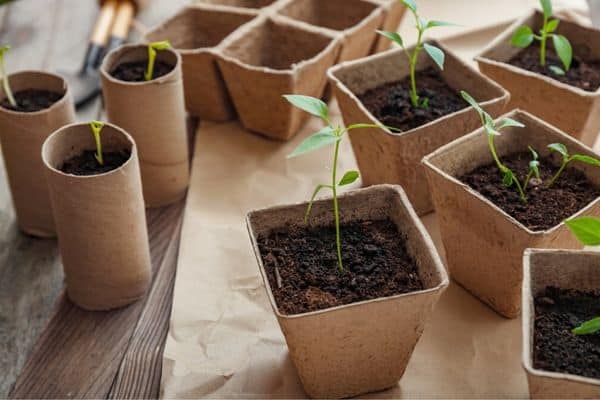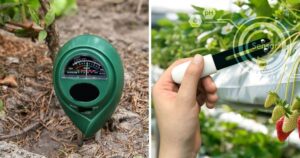Nowadays, caring for the environment is not just a trend; it is necessary. That is why the transition to more sustainable agricultural methods is even more important. Clearly, using biodegradable plant materials is one of the most environmentally friendly things you can do. These materials can be broken down naturally and added to the soil. They are an excellent choice for plastic pots and fertilizer. This article explores biodegradable plant materials, discussing the different types, their uses, and how they can help make the world a greener place.
How to Understand Biodegradable Plant Materials:
Natural organic materials are used to create biodegradable plant materials that break down over time without causing damage to the soil. Unlike plastic, these materials break down in the soil, improving its nutrition and helping plants grow better. There are many new ways to grow with biodegradable materials, such as pots made from peat, cow manure or paper, as well as natural fertilizers and mulch.
Different Types of Biodegradable Plant Materials:
- Eco-Friendly Flower Pots
Organic products such as peat, cow dung, paper and even rice husks can be used to make these pots. They can be placed directly in the ground, pots, etc. This prevents them from experiencing transplant shock and reduces plastic waste.
- Organic Mulche
Organic mulches such as straw, grass clippings and shredded leaves can keep the soil moist and kill weeds. They also break down over time, returning nutrients to the soil.
- Organic Plant Foods
Organic fertilizers, which come from compost, manure, bone meal and cotton seed meal, among other things, slowly release nutrients into the soil. They improve their health and structure without the harsh chemicals in industrial fertilizers.
- Seed Pads and Tape
Seed bands and mats are made from recycled paper or fabric with perfectly distributed seeds. This makes growing easier and reduces waste.
- Plant Spikes and Sticks
It’s the little things that matter. Sustainable materials, such as bamboo or recycled paper, can be used to make plant stakes and markers. It is an environmentally friendly way to name and support plants.
Why using biodegradable plant materials is a good idea:
- Protect the Environment
By breaking down naturally, these materials reduce waste and plastic pollution in landfills, making the world a healthier place.
- Soil Enrichment
Biodegradable materials add organic matter and nutrients to the soil as they break down. This creates a healthy, active ecosystem beneath the surface.
- Reduce Carbon Footprint
The production and processing of plastic and plant products require energy and release carbon dioxide. This carbon impact can be reduced by using biodegradable products.
- Helps Biodiversity
A wide variety of organisms, from beneficial bacteria and insects to birds and small mammals, can live in healthy, nutrient-rich soil. This increases the biodiversity of the garden.
Implementing Biodegradable Planting Materials in Your Garden:
- Start Small
Start by replacing some plastic pots with pots that decompose naturally, or try using organic mulch in a small area of your garden.
- Use Compost
Composting is a great way to recycle kitchen and garden waste and create nutrient-rich organic fertilizer.
- Learn for Yourself and Others
Learn about eco-friendly gardening practices and share your knowledge with other gardeners. This will help build a community that cares and is responsible for the environment.
Questions and Things to Think About:
Biodegradable plant materials have many benefits, but there are also some things to consider. It may not be easy to find in some places and may be more expensive than the average product. But the long-term benefits to the environment and soil health often outweigh these initial concerns.
The Future of Gardening: A Better Future
Biodegradable plant materials aren’t just gardening style; they are an important step towards a lifestyle that does not harm the environment. By using these eco-friendly gardening techniques, gardeners around the world are making the world a better place, one garden at a time. By using naturally degradable materials, we care not only for our plants, but also for the land, providing future generations with a fertile and healthy place to live.
Summary:
All in all, biodegradable plant materials are a good alternative to regular garden items and are better for the environment. By using these things in gardening, we can create beautiful gardens while protecting the wild world. We are still looking for sustainable answers, and using biodegradable materials shows that we care about the planet and want a sustainable future.
FAQs:
1. What makes biodegradable plant materials environmentally friendly?
Biodegradable plant materials are made from natural organic matter that breaks down over time, enriching the soil without leaving harmful residues. This natural breakdown process reduces waste in landfills and reduces plastic pollution, making it an eco-friendly choice for gardening.
2. Do biodegradable flower pots really improve plant health?
Yes, biodegradable pots can improve plant health by minimizing transplant shock. Because these pots can be planted directly in the ground, the roots of the seedlings are not disturbed during transplanting. This promotes better root development and, overall, healthier plant growth.
3. How long does it take for biodegradable flower pots to break down?
The rate at which biodegradable plant pots decompose depends on the materials they are made of and the environmental conditions. In general, most biodegradable pots begin to break down within a few weeks to a few months after being planted in the ground. Factors such as moisture, soil composition and temperature can affect the rate of decomposition.
4. Are organic fertilizers as effective as synthetic fertilizers?
Organic fertilizers are just as effective as synthetic fertilizers, but they work differently. They release nutrients more slowly, which improves soil structure and promotes healthy soil life. While the results may not be as immediate as those of synthetic fertilizers, organic fertilizers can provide long-term benefits to your garden’s ecosystem.
5. What is the best way to start using biodegradable plant material in my garden?
The best way to start is by gradually incorporating biodegradable materials into your gardening routine. You can start using biodegradable pots for your next batch of seedlings, or you can use organic mulch in your garden beds. As you become more familiar with these materials, you can expand their use to meet your gardening needs and preferences.



